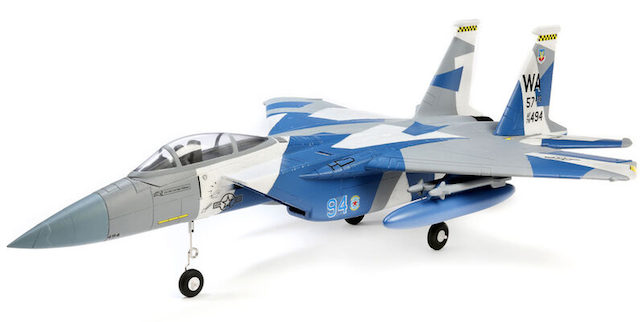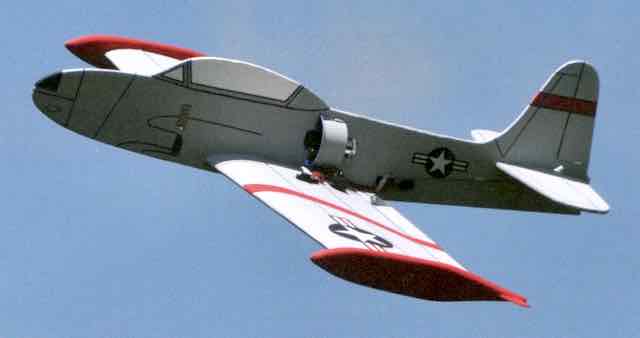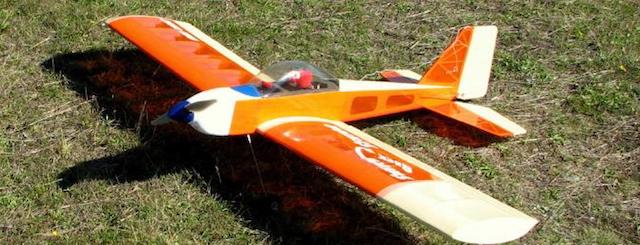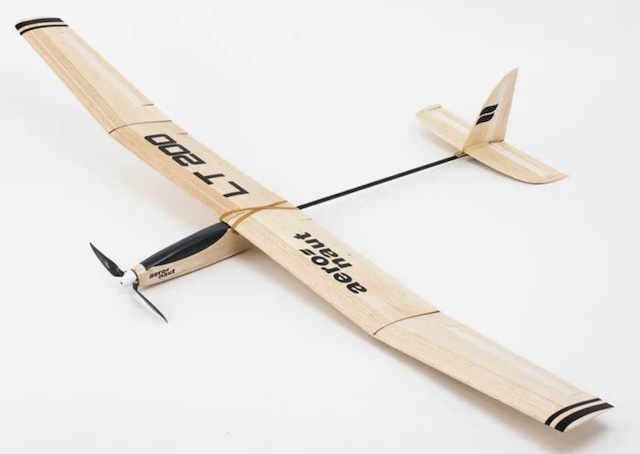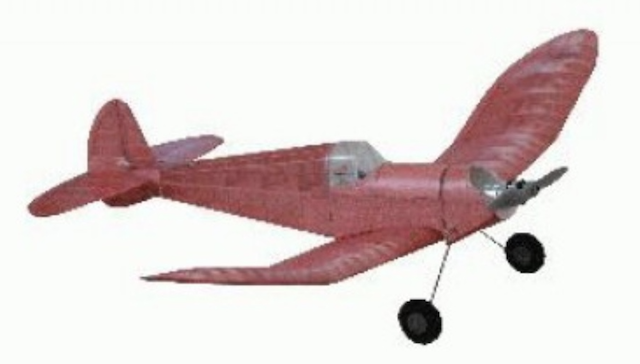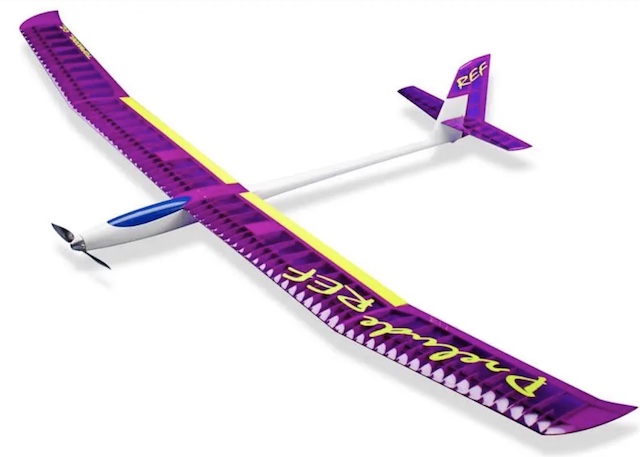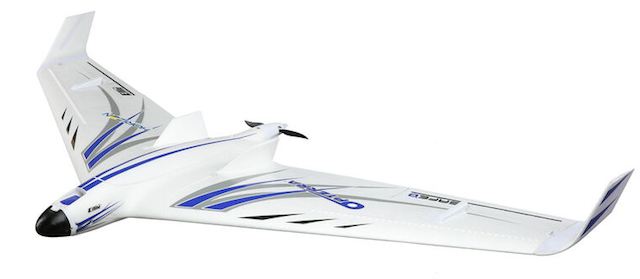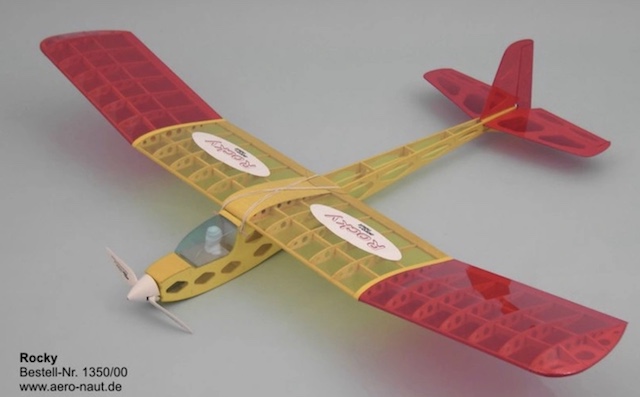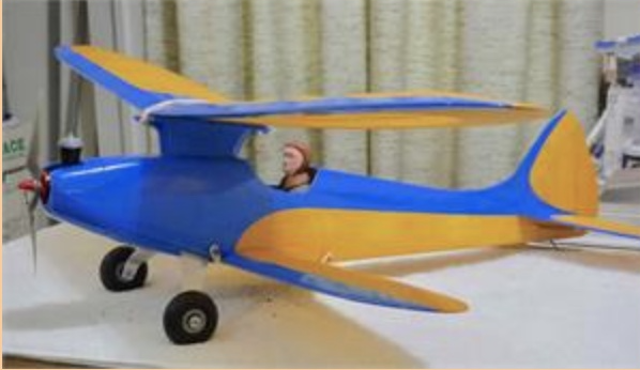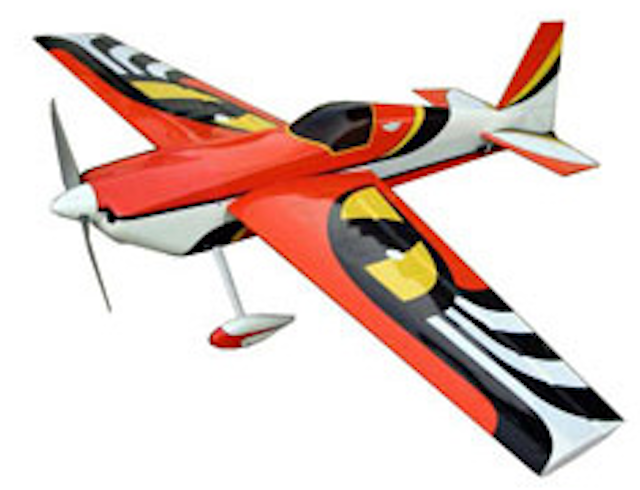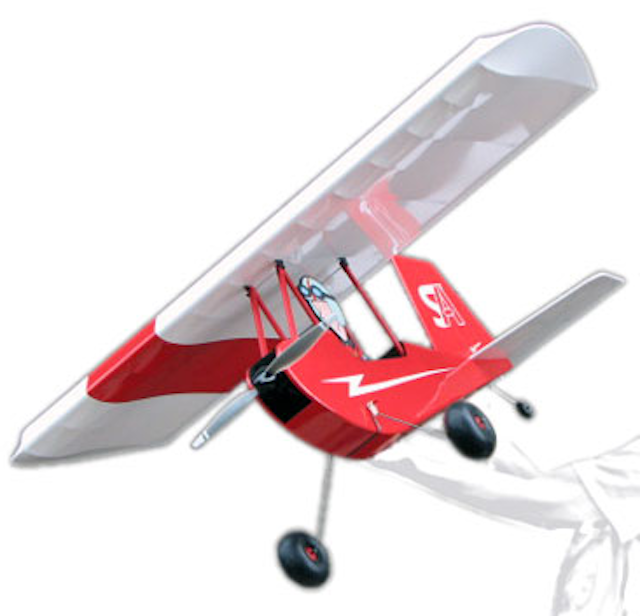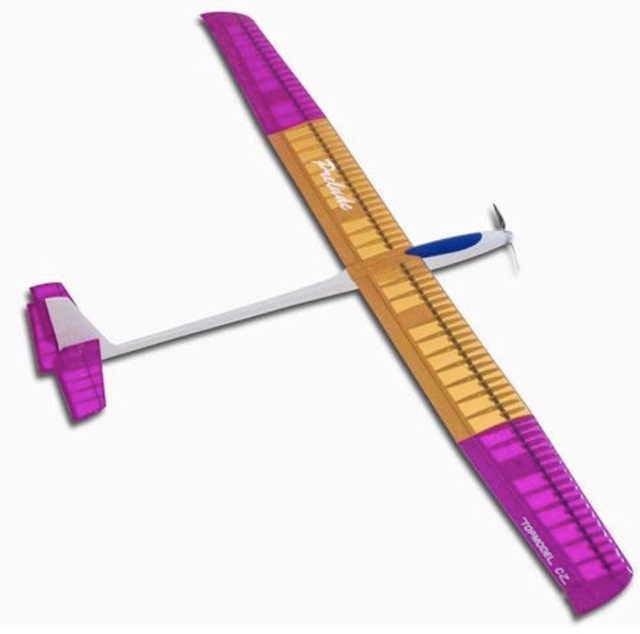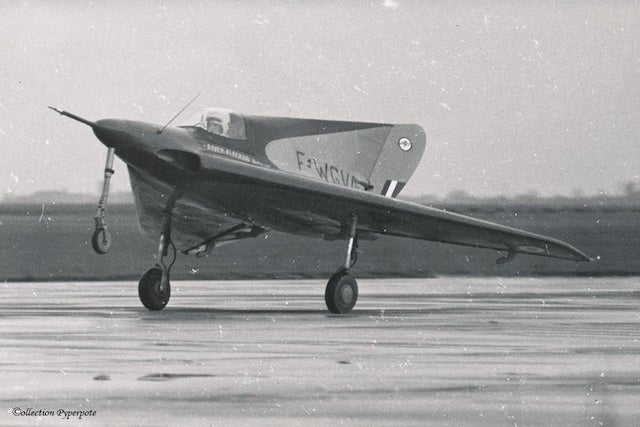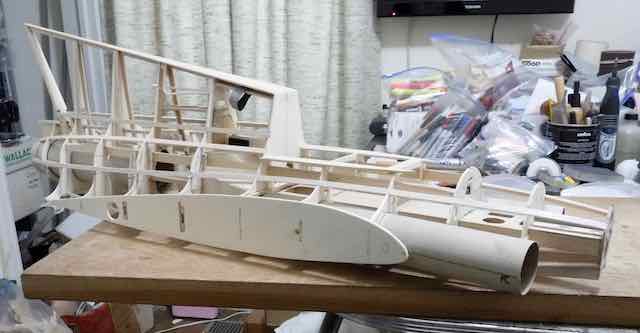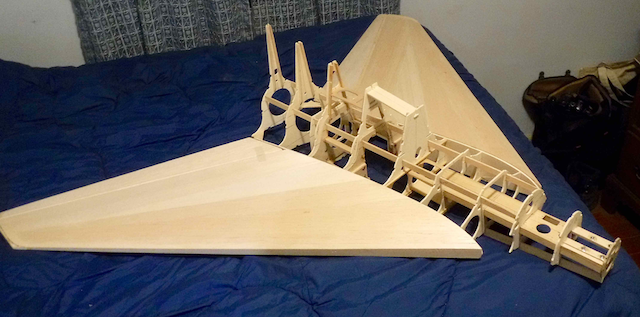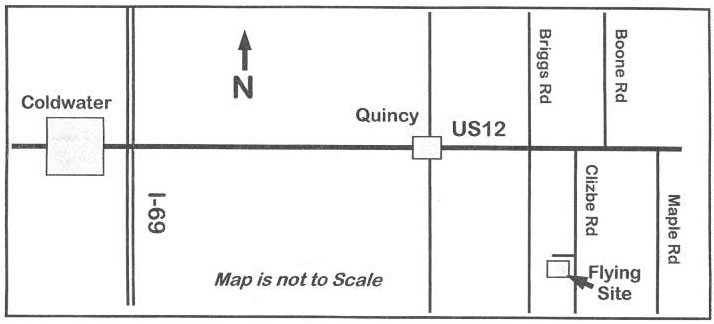 |
Flying High With Electric Power!
The Ampeer ON-LINE!
Fly the Future - Fly Electric! |
|---|
Site Table of Contents
| President: | Vice-President: | Secretary-Treasurer: |
| Ken Myers | Keith Shaw | Rick Sawicki |
| 1911 Bradshaw Ct. | 2756 Elmwood | 5089 Ledgewood Ct. W. |
| Commerce Twp., MI 48390 | Ann Arbor, MI 48104 | Commerce Twp., MI 48382 |
| (248) 669-8124 | (734) 973-6309 | (248) 685-7056 |
 | ||
| Board of Directors: | Board of Directors: | Ampeer Editor |
| David Stacer | Arthur Deane | Ken Myers |
| PO Box 75313 | 21690 Bedford Dr. | 1911 Bradshaw Ct. |
| Salem, MI 48175 | Northville, MI 48167 | Commerce Twp., MI 48390 |
| (313) 318-3288 | (248) 348-2058 | (248) 669-8124 |
| Upcoming EFO Meeting: Wednesday, March 9 Time: 7:30 p.m.
Place: Zoom | ||
| The February 2022 Ampeer Quiz Ken Myers discusses his quiz question in the February 2022 issue and notes the point that he was trying to make. | Keith Shaw's "Rule of Thumb" For Stall Speed Ken discusses why why Keith's "rule of thumb" is quite reasonable and reliable. |
| The January 12, 2022 EFO Zoom Meeting Highlights from the meeting; Ken Myers shared how to calculate wing area using foam board, Keith Shaw talked about cleaning his shop, Dave Stacer lead a discussion on the FrankenRadian, Keith Shaw shared information on his never completed KATY, the date for the 2022 Mid-Am was set, Ken Myers followed up with three planes he never finished - a Bipe Lite, B-25 and Mig 3. | The Chicken Hawk Conundrum Ken Myers discusses the "numbers" differences between two versions of this plane. |
| Calculating Oddly Shaped Wing Areas;
The Chicken Hawk Used an Example Ken Myers shares his How To for measuring the wing area of oddly shaped wings. |
It's My Problem. It's Your Problem. It's a Browser Problem Ken Myers explains some HTML coding errors he's made and how he's trying to fix them. |
| The March 1989 Version of the Ampeer Ken Myers provides info on the second anniversary of the |
A Curious Coincidence Ken Myers explains why the wing cube loading value (WCL) is unit-less. |
| June 4, Saturday Keith Shaw Birthday Bash Fly-In Dave Grife, CD, announces this fun meet and shares further information. | Skymasters Indoor Flying 2021/2022 Skymasters' president, Pete Foss, fills us in on the indoor flying season in Pontiac, with some updated notes by Ken. |
By Ken Myers In the February 2022 issue of the Ampeer, I asked the following question, "What range of data do all 12 planes share?" The answer, that I was looking for, was that all 12 planes range between 9 oz./sq. ft. to 10 oz./sq. ft. I apologize for not making the question clearer. Many modelers, in the USA, use ounces per square foot to form a "group" that somehow relate to each other in some way. Some may call it a "flyability" level or a group of planes with similar flight characteristics. The twelve plane group contains; four sailplane/gliders, two EDFs with different aspect ratios (ARs), two aerobatic types with one being a sport type and the other somewhat scale-like, a sport high wing/parasol, a low-wing old-timer type, a flying wing and a somewhat small biplane. Their wing spans ranged from 28.2 inches to 98.5 inches. The flying weights ranged from 19.4 ounces to 49.3 ounces. The question then becomes, is this really a realistic grouping for any purpose? The test URL link, was removed from the original 12 plane table, and is now just its image. b. The wing area loading is now noted, along with the approximate stall speed based on Keith Shaw's formula; stall speed in miles per hour equals the square root of the wing area in square feet times 3.7.
The table now shows that the stall speeds range from 11.1 mph to 11.7 mph. This is not surprising as Keith's formula is based on the square root of the wing area loading, and they all are in the same range of wing area loading; 9 oz./sq. ft. to 10 oz. / sq. ft. There is now a viable reason to group them together. If the flying speed is kept above 12 mph with any of these models, it should not stall, but... The 28.2" wing span F-15 will "look" and be perceived in the air very differently from either of the 98.5"t; Preludes flying at 12 mph. They will also "handle" very differently in the air because of their wing spans and aspect ratios. To maintain flying at 12 mph, or above, the landing approach angle of the F-15 will be much steeper than that of a Prelude. The two different types of planes will "appear" to land very differently but both will require a flying speed of at least 12 mph. Power loadings have not been taken into consideration. Hopefully it is understood that the various types of planes being compared here, flying in their typical fashion during a typical "flight mission" will perform very differently in the air because of their specifically designed airframe flight missions. There is one "rule of thumb" that is apparent using the wing area loading; "Planes with a wing area loading of between 9 oz. / sq. ft. and 10 oz. / sq. ft. should be kept at about 12 mph, or faster, to keep from stalling." There are other factors that influence the stall. The airfoil chosen is one, as well as whether the wing has a way to modify the airfoil using flaps and/or spoilers, but for the most part, 12 mph seems like a good "rule of thumb". The question is now, "Is there a more useful, and meaningful way to find a mathematical model to compare these planes more realistically and not just by their stall speed?" Keith Shaw's "Rule of Thumb" For Stall Speed
"Rules of Thumb" allow us to more easily grasp difficult concepts with an ease of use application. "Rules of Thumb" are NOT the exacting standards that an engineer would use, but simplified mathematical models to achieve approximations using simple methods. There are specific mathematical calculations, that can be applied to a specific aircraft's design, to achieve a stall speed number under various conditions. Keiths "rule of thumb" formula does provide an approximation for planes with a specific wing area loading; stall speed, in miles per hour, equals the square root of the wing loading in ounces per square foot, times 3.7. Wing Area: 235 sq. ft. www.wwiiaircraftperformance.org/mustang/p-51d-na-46-130.html Landing Gross Weight: 9071 lb. or 145,136 oz.
Given stall speed on above Web page: 95.4 mph "That is close enough for me to accept Keith's "rule of thumb" as quite valid. The January 12, 2022 EFO Zoom Meeting The pandemic seems to be infecting more folks all of the time now, so the Wednesday, January 12, 2022 meeting was held over Zoom. There were six EFO members present; Roger Wilfong, Keith Shaw, Dave Stacer, Rick Sawicki, Jim Pollack and Ken Myers. There was a lot of general discussion about the state of our lives now. There was good news from Dave Stacer, he's a new grandpa and Roger Wilfong announced that he'll be reaching grandfather status in March. Congratulations guys! Ken Myers talked about calculating the wing area for the Retro RC Chicken Hawk and showed the photos of how he did it using the "weight method". The how to for this method is in this Ampeer. Keith Shaw talked about spending a lot of time cleaning up his "household tools" in his basement and the discussion broadened into getting our building areas and modeling tools cleaned up as well. Dave Stacer lead a discussion on the FrankenRadian. The FrankenRadian is a sailplane project of the Midwest RC Society. He also shared some photos from the RC Groups Website. EFO, and Midwest RC Society member, Denny Sumner, has the build thread for this project on the RC Groups site. 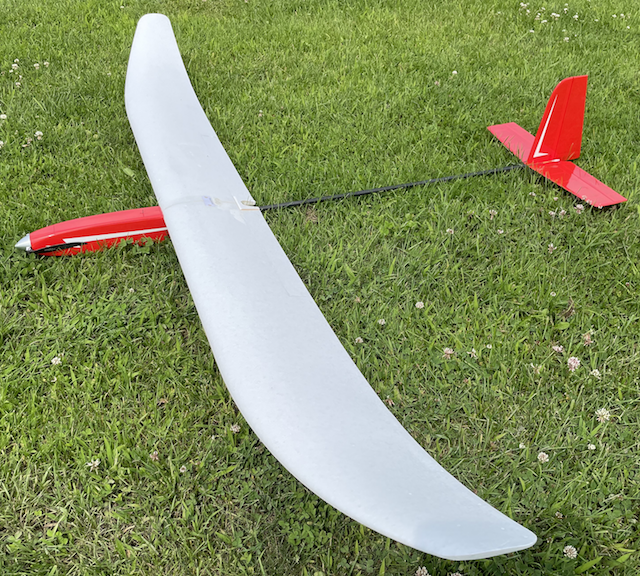
Photo of Denny Sumner's FrankenRadian from his build thread.
Ken Myers asked Keith Shaw if he'd ever finished up the KATY that he'd started back in February 2015. The Payen Pa 49 Katy, was a French experimental tailless aircraft that was first flown in 1954. Keith told us that even though he'd gotten a long way into the project, the "numbers" were not looking good, so the project was abandoned. On Feb. 10, 2020 I received an email from Keith noting the end of this project. He stated, "Sometimes the best thing to do is to drop back ten and punt... It wouldn't be the first time that I had to build multiple testbeds before the scale model can be successful." 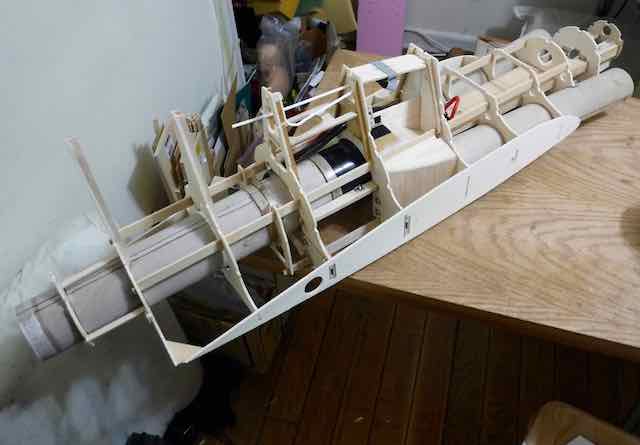
I put a few photos here that show how far he'd gotten into the project. The date for the 2022 Mid-Am was announced. It will be on Saturday, July 9 and Sunday, July 10. It will be run the same way as last year, and the Saturday chefs have already volunteered. ;-) We all had a good time chatting and it was just really nice to get together with the guys. The following day, I got to wondering how many of us have abandoned RC plane projects, part way through, for various reasons, and whatever happened to them? Personally I can thinks of three; a very large, very light biplane based on a plane called the "BIPE LITE" designed by Bob DeMond and presented in the May 1985 Model Builder, a "40 size" MiG 3 and a pretty good size B-25. I do know what happened to all of them. I gave them to my flying buddy and good friend Richard Utkan. I was told that he did finish the MiG 3, but I never saw it fly. 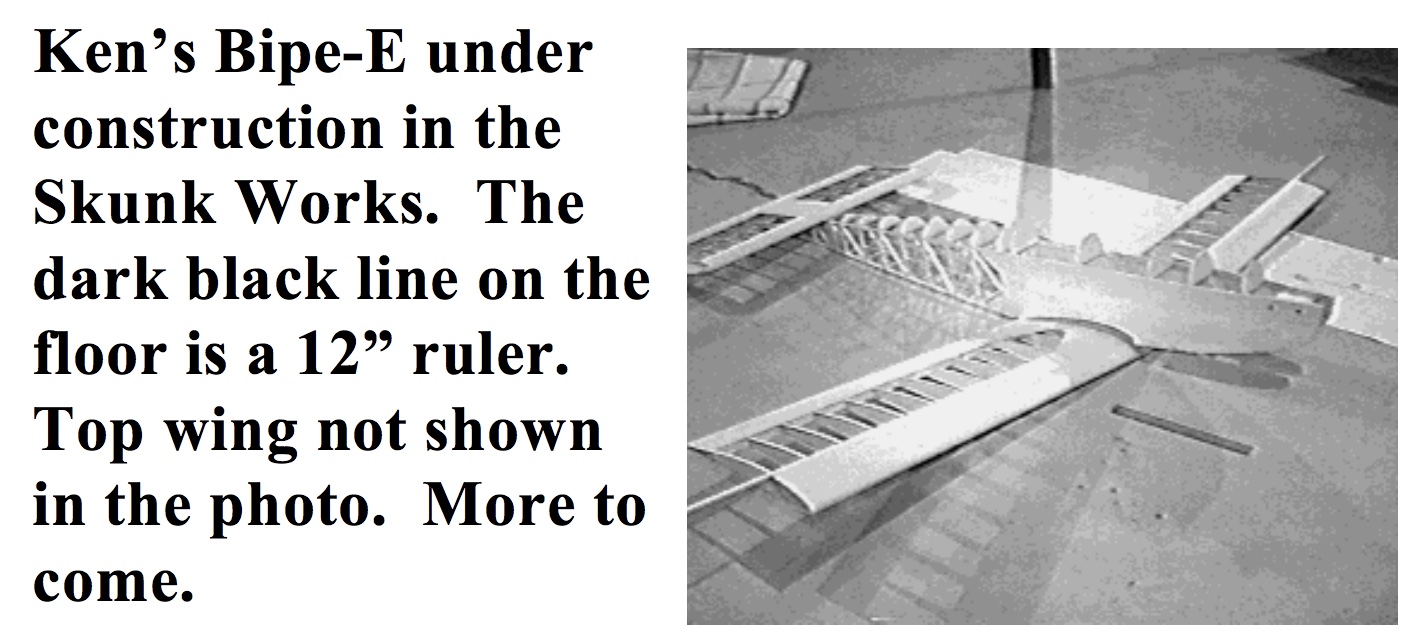 My Bipe-E, was very similar to the BipeLite, AKA Weight Watcher. The top wing was completed, but not shown in the photo. I'd not yet built/bent up the cabane struts when I gave it away. The photo is from the April 1995 Ampeer. 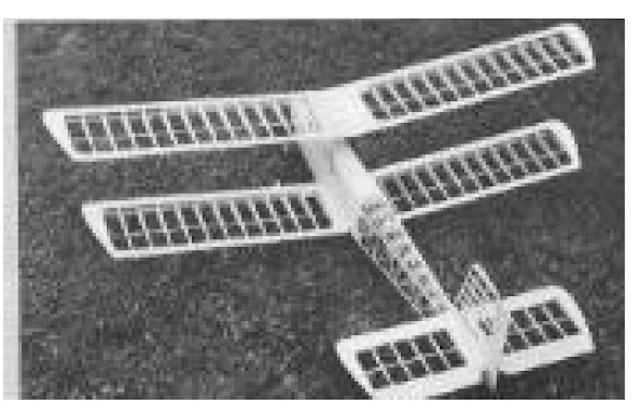 This photo of this Bipe Lite is from the original article. The Chicken Hawk Conundrum
I was having a hard time reconciling Bob Benjamin's numbers from his Chicken Hawk review, in the February 2021 issue of Model Aviation, with the Retro RC Chicken Hawks that I seen fly.
I am extremely fortunate to fly with two AMA Hall of Fame Members on a regular basis. I have seen both Keith Shaw's and Mark Freeland's, Mr. Retro RC, Chicken Hawks fly. My recollection was that they were a bit more "floaty" than Mr. Benjamin's numbers indicated. I found Keith's review in the March 2021 Ampeer. 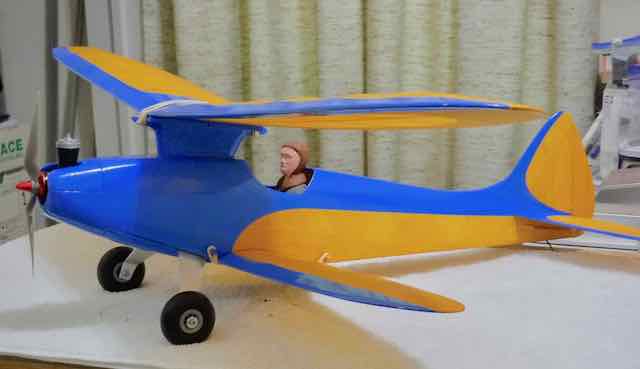 The photo of Keith's Chicken Hawk is from the March 2021, Ampeer. In that issue, Keith notes the flying weight as 12.9 oz. That weight changes the "numbers" significantly.
(How I derived some of that data regarding the wing areas is in the following article, while the stall speed was previously explained in this issue. KM) Those numbers more closely reflect my observations at the flying field over the summer. The wing loading of Keith's plane puts it into the 7 oz./sq. ft. to 8 oz./sq. ft. range and moved the WCL from the typical sport/trainer range of 7 - 9 and moved it into the Park Flyer range of 5 - 7. Again, those kind of numbers truly reflect what I observed. I was satisfied that the numbers were working and the extra 3-ish plus ounces of Bob's version would change the observed flight characteristics, if I ever got to see it fly. Calculating Oddly Shaped Wing Areas;
Tools:
 I was not sure about the wing area of Ted Strader's Chicken Hawk biplane. "In "NOSTALGIA ISN'T THE ONLY REASON TOO BUILD THIS MODEL - Retro RC Chicken Hawk, p. 43 - 48 of the February 2021 Model Aviation, Bob Benjamin, noted the wing area as 236 sq. in. He also noted that the completed model weighed 16 oz. yielding a wing loading as 9.6 oz./sq. ft. for the Retro RC version of this model, while Keith's came in at 7.86 oz./sq. ft. The Chicken Hawk wings have nicely rounded tips and the rear of top wing center section trailing edge is curved towards the center line between the wing panels.  I decided that I wanted to check Bob's wing area calculation. I wanted as close to actual areas as possible, as I was looking at the relationship of the top wing area to the bottom wing area of a biplane for another purpose. I found a piece of Elmer's foam board that I'd previously cut a chunk out of. I like Elmer's foam board, for this purpose, because it is heavy, actually too heavy to use for foam board type planes. I was able to cut two pieces from the foam board to fit the wing panels. Piece 1: 9" x 14.0625" = 126.5625 sq. in.
I averaged the two g/sq. in. weights to use as the basis of the wing area calculation, which is based on weighing the cut out wing panels; the wing panels' weight is divided (/) by 0.3655219 grams to yield the sq. in. of wing area. The cut out wing panels were weighed and then divided by 0.3655219 to yield the wing area in sq. in. 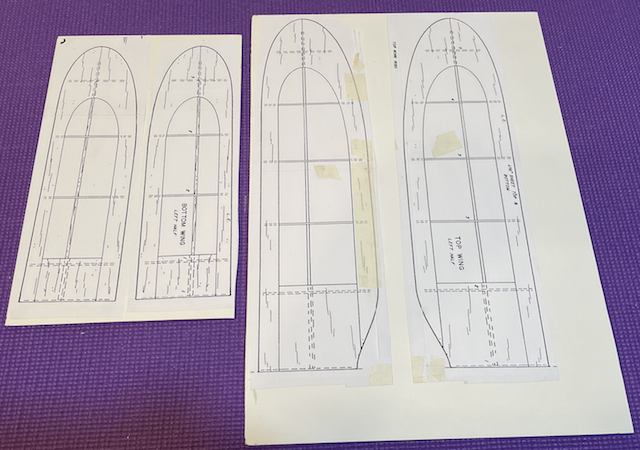 The paper panel templates were glued to the foam board using an Elmer's purple glue stick and then carefully cut out. 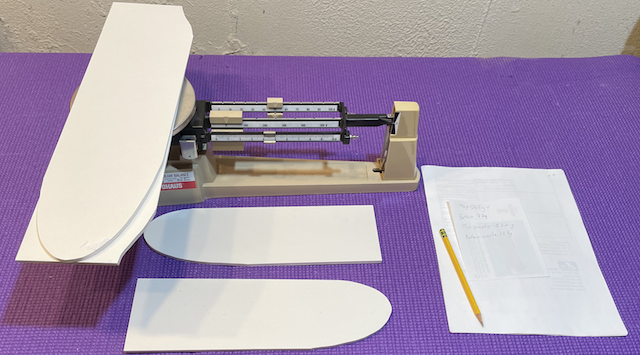 The top and bottom wing panels were weighed. The top panels weighed 54.4g.
The bottom panels weighed 32g.
The total wing area was calculated to be 236.3 sq. in., which is perfectly in line with Bob Benjami'Ős stated value! Great work Bob! I found what I was looking for. The lower wing area was 58.5% of the upper wing area and 37% of the total wing area. 58,5% keeps the wing area difference in the biplane category type, which is above the sesquiplane category, that is 50% or less of the top wing area. All was right with the world once again, I was able to use the percentage for the project that I was working on. ;-) It's My Problem. It's Your Problem. It's a Browser Problem
Wow, I really messed up! On January 19, 2022, I received an email from Bob Blau, a LONG time EFO member. He told me that he's having a lot of trouble reading the HTML version of the Ampeer, and has had the same problem for years. OMG - oh my goodness, years! The problem is caused by the way the Ampeer is "put together". First I write the issue in Mac Pages, a word processing program. The PDF is created from that. Next I hand code the text into HTML using a text editor for the Mac called "BBEdit". I found that when I copy someone's email or text from the Internet into Pages and then copy that text into BBEdit, some spurious characters will display in the Chrome browser when viewing that page. Many times those editing mistakes do not always show up in Chrome on the Mac, but they do in the Windows version of Chrome. For the HTML version, I have to hand code things like links, quotes, apostrophes, bold, italics, underline, superscript and subscript. etc. A few years ago, I became aware of the problem with the compatibility of the Chrome browser on the Mac and Windows, so, when I've been proofing the HTML version, I've set my wife's Window's laptop next to my Mac and caught what I thought were all of the problems. WRONG!!! Bob uses the Mac's built-in browser called Safari. Thanks to Bob's email, I just learned that the Safari version still displays a lot of characters that neither version of Chrome did. Head slap. I apologize to those of you that have been having problems do to my poor coding, I just wish that any of you having problems viewing the HTML version would have, and will, let me know about it. At this time, I am going backwards, starting from January 2022 and "cleaning up&quoy; my coding errors and reposting the file so that at least the most recent versions do not have so many conspicuous errors. I am very sorry about that folks! The March 1989 Version of the Ampeer
Usually, in the March issue of the Ampeer, I note that issue one of the Ampeer, March 1988, known as the W.O.L.F.'s Call, is celebrating its "birthday". Since I noted that in the February 2022 Ampeer, in the article titled "The Complete Ampeer Index", I'd like to take a look back again. To see how much the club and newsletter grew in one year, take a look at the March 1989 issue. Because there was no computer version available, as I was using an Apple II GS at the time, the printed version master was scanned to provide this copy. By that time, mailed versions of the Ampeer were reaching many states, including Alaska. There is a lot of "interesting" stuff in this issue, including how to break-in brushed motors. The header "block" was developed that would be used for many years to come. There were also two cartoons in this issue, and they would become a staple in each issue for many years. A Curious Coincidence
For many years I have discussed the concept of using wing cube loading (WCL) to compare the "flyability" of different and similar types of model aircraft. I have noted before that the WCL value is unit-less, but why is it unit-less when wing area loading is not? Wing area loading is based on mass, but those of us who "think" in Imperial units, often "call it" weight, divided by some type of square units of wing area, depending on whether we "think" in Imperial units or SI units. Many model aviation Imperial "thinkers" think of wing area as the ready to fly "weight" in ounces (oz.) per wing area in square feet (sq. ft. or ft2).
On the other hand, usually, when talking about full scale aircraft, the "weight" is stated in pounds and the results are are in pounds per square foot. Many model aviation SI "thinkers" think of wing area as the ready to fly mass in grams (g) per wing area in square decimeters (dm2).
Imperial "thinkers" might comprehend the notation 14.4 oz. / sq. ft. while SI "thinkers" might comprehend 43.9 g / dm2. In case you did notice, both of the calculations use the same mass (weight) and wing area. The units are just expressed differently. It is fairly obvious that "thinking" in one unit and then trying to "switch that thinking" to another's units of "thinking" is extremely hard as nothing seems to "jive", but... One form of the wing cube loading formula is that the mass ("weight") is divided by the cubed value of the wing area. Wing area is stated in square units: To assign it a cubed value, the area's square root needs to be determined and then multiplied by that result three times to create a cubic value. Remember that 500 sq. in. is 3.4722222 sq. ft. The square root of 3.4722222 sq. ft. is 1.86339 ft.
1.86339 ft. times 1.86339 ft. times 1.86339 ft. equals 6.47 cubic feet. (rounded)
or alternately
In Imperial units the WCL for the 50 oz. 500 sq. in. plane would be:
Hang in there. This is where it gets interesting. The units used to create the SI wing cube loading are kilograms (kg) and meters squared (m2). Using the previous example, the mass of 1417.48 g is converted to 1.41748 kg by dividing by 1000 and the 32.258 dm2 is converted to m2 by dividing by 100, which yields 0.32258 m2.
Note that the value of 7.73 oz. / cu. ft. is very close to the value of 7.77 kg/cu3. The two values are within 1/2 of 1% or each other. For me, that is close enough to call them "the same". In other words, when a person using one type of unit measuring system tells a person using the other type of unit measuring system the WCL value, both can understand that particular parameter and it ramifications on the model's flight characteristics with no conversions necessary. hat is why WCL is usually presented with no unit descriptor. The aspect radio (AR) is the relationship of the wing's length to its chord. The formula for the AR is wingspan squared divided by the wing area. If the example plane, used throughout this article, had a wingspan of 50" then the AR would be
SI units
Therefore the AR ratio is also unit-less. Without having to do any conversions, modelers using either one of the measuring systems can communicate two of the model's parameters. Could there possibly be more? June 4, Saturday Keith Shaw Birthday Bash Fly-In, Coldwater, MI
The Balsa Butchers are hosting the "Keith Shaw Birthday Party Electric Fly-In", for the 20th year, at their field near Coldwater, MI. The event takes place on Saturday, June 4, 2022. It is a one day event again this year. The event consists of Open Electric Flying with a "Special Guest of Honor Theme", Happy Birthday Keith Shaw [June 6]. Enjoy a day with the "Pioneering Master of Electric R/C Flight". 8 a.m. - 4 p.m., Saturday.
For additional information contact;
The field will be open for guests to fly on Sunday as well. Skymasters Indoor Flying starting October 20 through April 13, 2022
HELLO INDOOR FLIERS! We're back for Indoor Flying starting October 20th! I'm very happy to announce that through the efforts of Fred Engleman and Paul Goelz we have an agreement with Reimagine Recreation to fly on Wednesdays at United Wholesale Mortgage Sports Complex (formerly Ultimate Soccer). It was a bit of a struggle dealing with the new owners of the facility and I would really like to thank Fred and Paul for stepping up and pushing us to the finish line! There are some differences beyond the fact that we will be flying on field 4 (the one in the back) since field 3, where we used to fly, is now a basketball and volleyball arena. Everyone who enters the building for any reason during our time slot MUST SIGN A LIABILITY WAIVER. It would be helpful if you print a copy, sign and bring to your first flying session but we will have printed waivers on hand too. Park out back by field 4. You will not be allowed to enter the front door. To simplify this year, we went with only Gold (season pass) cards for $150 and single sessions at $10 each. Also, since ReImagine charges Skymasters for each and every pilot who flies, youths and spouses are no longer free. Here is a direct link to register and purchase a Gold Card or print out a registration form for your first single session. Hope to see many of you on the 20th, or before, at the Night Fly and Free Tailgate Swap at Skymasters' Field. Indoor Flying - Wednesday, October 20, 2021 - UWM Sports Complex, 837 South Blvd, Pontiac, MI
Contact: Fred Engleman
Updated Information 11/01/21: FYI - For those of you who want to park a little closer, we found out that the early morning Wednesday, UWM Training Sessions let out at 10 and the parking lot empties out quickly making more room for us closer to entrance of Field #4.
11/10/21: It seemed to work well that pilots who arrived few minutes after 10 were able to park closer to entrance for Field #4.
Indoor Flying at the Legacy Center in Brighton, MI Indoor flying takes place from November 3rd, 2021 until March 30th, 2022 at the Legacy Center Sports Complex, 9299 Goble Dr., Brighton, MI 48116, phone: 810.231.9288, on Wednesdays from 12:30 PM until 2:30 PM.
To Reach Ken Myers, you can land mail to the address at the top of the page. My E-mail address is: KMyersEFO@theampeer.org |
